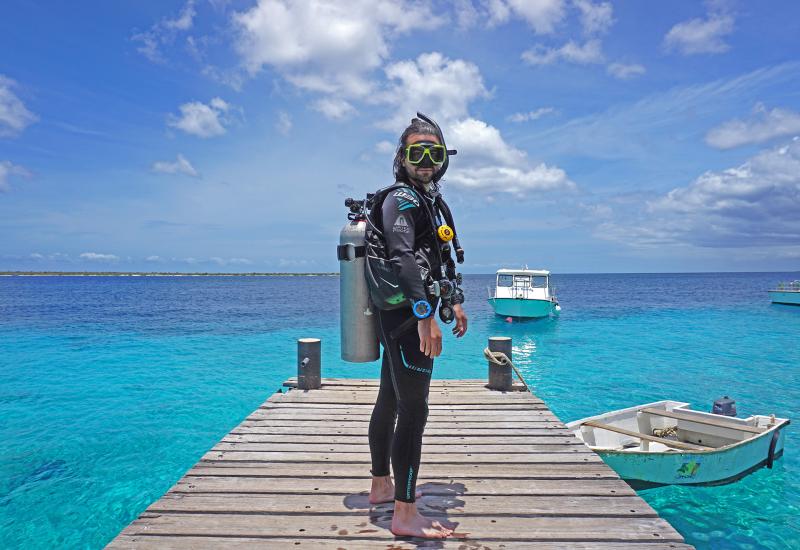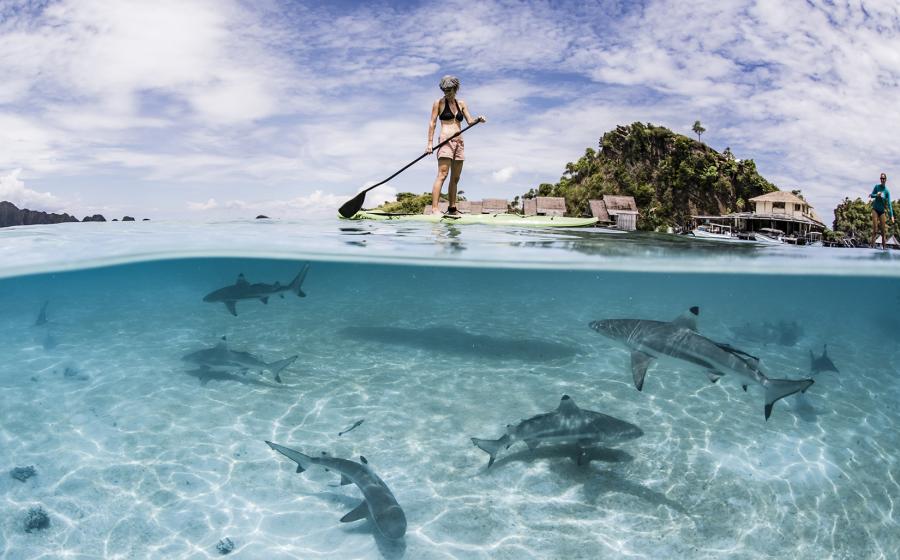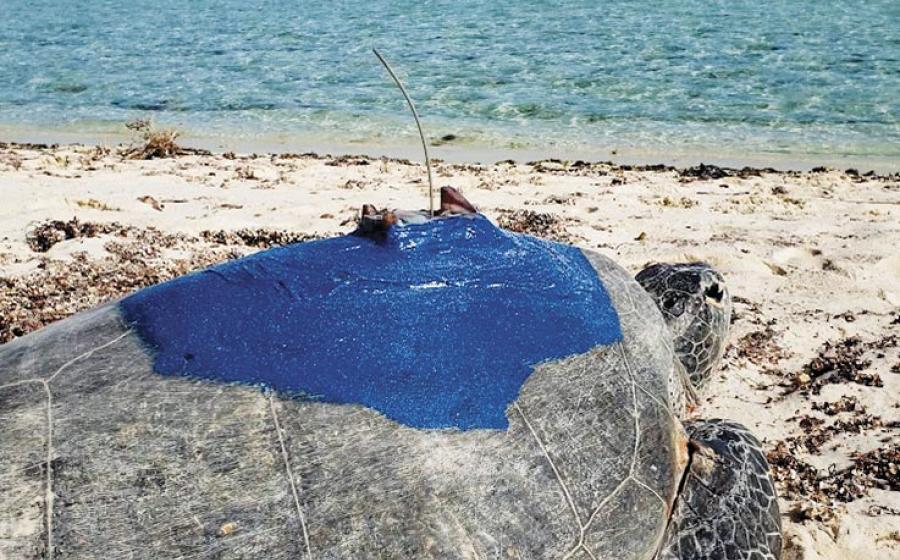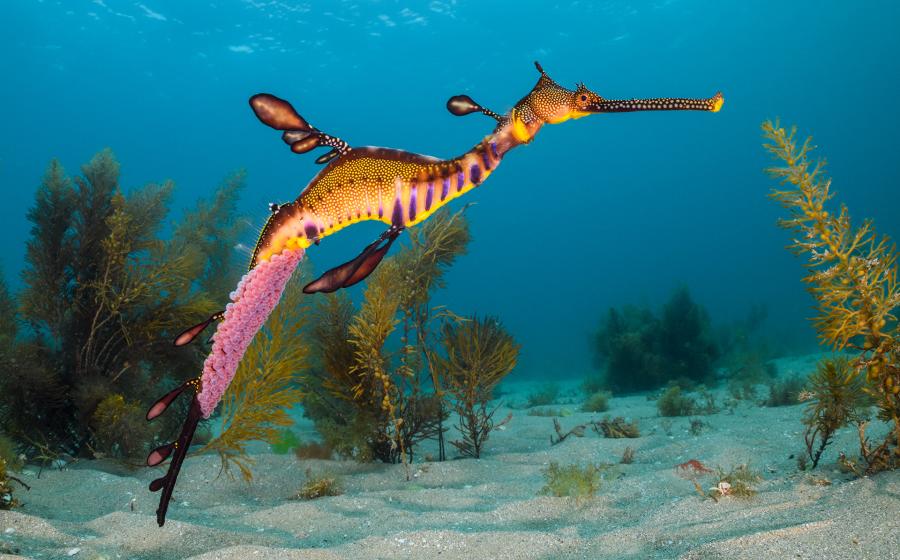Ask An Instructor - October 2007
October 2007
By Michael Ange
Q: I'm interested in purchasing a new regulator. Some of the manufacturers state that if the regulators are to be used for nitrox, they need to be cleaned for oxygen exposure and, once cleaned, dedicated for nitrox use. Is this legitimate?
A: Yes, it is legitimate, depending on the standard you use. There are two standards to look at, an industrial standard and the Navy standard. Frequently, the manufacturers are forced by various regulations to adhere to an industrial standard, which is more restrictive. The industrial standard requires that everything exposed to more than 23.5 percent oxygen be cleaned as though it were used in pure oxygen and then dedicated for use with that type of gas. Most technical divers and technical agencies rely on the more practical U.S. Navy standard. That standard allows you to treat oxygen-enriched air mixtures with up to 40 percent oxygen content (on open-circuit regulators) as air. This means no special prep of the regulators and no need to restrict its use, though it is a good idea to use O2-compatible lubricants and EPDM or viton O-rings when you have the reg serviced.
For mixtures over 40 percent oxygen or for manufacturers who require dedicated use and cleaning of regulators, you must dedicate the reg to oxygen or nitrox use. Compressed air comes from oil-lubricated compressors and even with the excellent filtration required for breathing use, the air still contains trace amounts of hydrocarbons. These hydrocarbons will accumulate on the surfaces inside the regulator and can cause flashing or very small fires inside your equipment when exposed to high percentages of O2 at high pressure. In theory, this could literally start a chain reaction where the tank itself actually burns due to the high concentration of O2. In reality, the biggest risk is damage to the O-rings and seats inside your reg causing a failure and the production of very harmful contaminants like cyanide and carbon monoxide as the rubber components burn. The air used to make nitrox has a much higher filtration standard that permits a much lower concentration of hydrocarbon contamination. If you only use the regulator with nitrox or air cleaned for nitrox, the risk of hydrocarbon flashing is much lower. However, even these gases are not completely hydrocarbon free. So after you use the reg a number of times, you will still get some hydrocarbon buildup requiring an oxygen-cleaned regulator to be cleaned again periodically-ideally, every year when you do your annual service.
Q: I have been diving for a year now and I just picked up some soft weights for my gear. Recently I was on a dive trip and an instructor told me that soft weights were bad for the environment because they degrade with time and bad for divers because they are not accurately measured. Is this true?
A: The answer to your question is really a question of quality. There are some cheaply made weights on the market that lack consistency in weight and that do leach lead oxides into the environment. However, there are also several companies that produce high-quality lead pouches that are true to their measurement and use processes that make them safer for the environment.
Some alloys of lead are harder than others, and softer lead will flake off and shed away when immersed in salt water, leaving lead oxide in its wake. More reputable companies use the harder alloys to prevent this problem, or they coat each little ball of lead with a protective chemical to isolate the metal from the saltwater environment. Over time, however, these coatings can wear off. Test your weights by immersing them in water for several minutes, agitate them a bit, then pick them up and allow the water to drain from the weight. If the water has a white or grayish substance clouding it, then it is time to replace your weights.
Q: Can you tell me what will be expected of me when I do my open water checkout dives? I've been through my classroom and pool sessions. I would like to know what's next.
A: It's hard to answer your question in detail as the specific requirements vary from agency to agency. In general, however, you will be asked to complete all of the skills that you completed during pool training, only without the building steps. For example: Instead of putting just a little water in your mask and clearing it several times, you might be expected to fully flood or even remove your mask and clear it right off the bat.
The biggest thing to remember is that checkout dives are designed to be your final exam, not a class. Your instructor will expect you to be able to complete all the skills proficiently with minimal review, so take the time to review your skills before your first dive. You will do four skills check out dives. With some agencies, there are a lot of skill evaluations grouped into dives one and two, leaving you more time on dives three and four to enjoying the underwater experience. You will also find that your instructor gives you more and more independence as you go through the four dives, provided that he finds you to be both safe and proficient.
Q: I am just starting to learn to dive, and find that I constantly want to surface. I'm not fearful of the water, so I do not understand why I have this need to surface. Will this pass as I learn more and feel more comfortable with the equipment?
A: First, you need to accept your anxiety for what it is-a normal part of learning to dive. We are land animals, and some underlying fear of the water is a natural part of our mental makeup. Think about it: As soon as you were old enough to crawl, significant adults in your life probably took actions or made statements which conveyed to you that falling into or being submerged in water was dangerous. It takes time to overcome decades of having this message engrained in your psyche, and a lot of people have trouble with this when they start scuba lessons. Some people just try to ignore it. The smarter ones, like you, try to actually address the problem. Fortunately, you don't need a trip to a therapist to address your issues, just a patient dive instructor.
Schedule some pool time with your instructor or one of his certified assistants. Wearing your gear, wade into shallow water no more than four to five feet deep-you should be able to stand with your head comfortably above water if you start feeling too anxious. Lie on the bottom with your eyes closed and meditate, so to speak. Focus on your breathing. If you can do this for extended periods of time, your trust in the equipment will probably overcome your subconscious fear of drowning.
An alternative approach is to do something underwater unrelated to the demonstration of skills. You need something fun or interesting to focus on. Try playing underwater Frisbee with a divemaster or see if your instructor has PVC puzzles that you can work underwater. You get the idea. You need something to totally take your focus off thoughts of surviving. Once you realize you have been on the bottom for a half hour or so, your anxiety should begin to fade.
Got a question you need answered?
E-mail it to [email protected], or write to Ask An Instructor, 6600 Abercorn St., Suite 208, Savannah, GA 31405.
October 2007
By Michael Ange
Q: I'm interested in purchasing a new regulator. Some of the manufacturers state that if the regulators are to be used for nitrox, they need to be cleaned for oxygen exposure and, once cleaned, dedicated for nitrox use. Is this legitimate?
A: Yes, it is legitimate, depending on the standard you use. There are two standards to look at, an industrial standard and the Navy standard. Frequently, the manufacturers are forced by various regulations to adhere to an industrial standard, which is more restrictive. The industrial standard requires that everything exposed to more than 23.5 percent oxygen be cleaned as though it were used in pure oxygen and then dedicated for use with that type of gas. Most technical divers and technical agencies rely on the more practical U.S. Navy standard. That standard allows you to treat oxygen-enriched air mixtures with up to 40 percent oxygen content (on open-circuit regulators) as air. This means no special prep of the regulators and no need to restrict its use, though it is a good idea to use O2-compatible lubricants and EPDM or viton O-rings when you have the reg serviced.
For mixtures over 40 percent oxygen or for manufacturers who require dedicated use and cleaning of regulators, you must dedicate the reg to oxygen or nitrox use. Compressed air comes from oil-lubricated compressors and even with the excellent filtration required for breathing use, the air still contains trace amounts of hydrocarbons. These hydrocarbons will accumulate on the surfaces inside the regulator and can cause flashing or very small fires inside your equipment when exposed to high percentages of O2 at high pressure. In theory, this could literally start a chain reaction where the tank itself actually burns due to the high concentration of O2. In reality, the biggest risk is damage to the O-rings and seats inside your reg causing a failure and the production of very harmful contaminants like cyanide and carbon monoxide as the rubber components burn. The air used to make nitrox has a much higher filtration standard that permits a much lower concentration of hydrocarbon contamination. If you only use the regulator with nitrox or air cleaned for nitrox, the risk of hydrocarbon flashing is much lower. However, even these gases are not completely hydrocarbon free. So after you use the reg a number of times, you will still get some hydrocarbon buildup requiring an oxygen-cleaned regulator to be cleaned again periodically-ideally, every year when you do your annual service.
Q: I have been diving for a year now and I just picked up some soft weights for my gear. Recently I was on a dive trip and an instructor told me that soft weights were bad for the environment because they degrade with time and bad for divers because they are not accurately measured. Is this true?
A: The answer to your question is really a question of quality. There are some cheaply made weights on the market that lack consistency in weight and that do leach lead oxides into the environment. However, there are also several companies that produce high-quality lead pouches that are true to their measurement and use processes that make them safer for the environment.
Some alloys of lead are harder than others, and softer lead will flake off and shed away when immersed in salt water, leaving lead oxide in its wake. More reputable companies use the harder alloys to prevent this problem, or they coat each little ball of lead with a protective chemical to isolate the metal from the saltwater environment. Over time, however, these coatings can wear off. Test your weights by immersing them in water for several minutes, agitate them a bit, then pick them up and allow the water to drain from the weight. If the water has a white or grayish substance clouding it, then it is time to replace your weights.
Q: Can you tell me what will be expected of me when I do my open water checkout dives? I've been through my classroom and pool sessions. I would like to know what's next.
A: It's hard to answer your question in detail as the specific requirements vary from agency to agency. In general, however, you will be asked to complete all of the skills that you completed during pool training, only without the building steps. For example: Instead of putting just a little water in your mask and clearing it several times, you might be expected to fully flood or even remove your mask and clear it right off the bat.
The biggest thing to remember is that checkout dives are designed to be your final exam, not a class. Your instructor will expect you to be able to complete all the skills proficiently with minimal review, so take the time to review your skills before your first dive. You will do four skills check out dives. With some agencies, there are a lot of skill evaluations grouped into dives one and two, leaving you more time on dives three and four to enjoying the underwater experience. You will also find that your instructor gives you more and more independence as you go through the four dives, provided that he finds you to be both safe and proficient.
Q: I am just starting to learn to dive, and find that I constantly want to surface. I'm not fearful of the water, so I do not understand why I have this need to surface. Will this pass as I learn more and feel more comfortable with the equipment?
A: First, you need to accept your anxiety for what it is-a normal part of learning to dive. We are land animals, and some underlying fear of the water is a natural part of our mental makeup. Think about it: As soon as you were old enough to crawl, significant adults in your life probably took actions or made statements which conveyed to you that falling into or being submerged in water was dangerous. It takes time to overcome decades of having this message engrained in your psyche, and a lot of people have trouble with this when they start scuba lessons. Some people just try to ignore it. The smarter ones, like you, try to actually address the problem. Fortunately, you don't need a trip to a therapist to address your issues, just a patient dive instructor.
Schedule some pool time with your instructor or one of his certified assistants. Wearing your gear, wade into shallow water no more than four to five feet deep-you should be able to stand with your head comfortably above water if you start feeling too anxious. Lie on the bottom with your eyes closed and meditate, so to speak. Focus on your breathing. If you can do this for extended periods of time, your trust in the equipment will probably overcome your subconscious fear of drowning.
An alternative approach is to do something underwater unrelated to the demonstration of skills. You need something fun or interesting to focus on. Try playing underwater Frisbee with a divemaster or see if your instructor has PVC puzzles that you can work underwater. You get the idea. You need something to totally take your focus off thoughts of surviving. Once you realize you have been on the bottom for a half hour or so, your anxiety should begin to fade.
Got a question you need answered?
E-mail it to [email protected], or write to Ask An Instructor, 6600 Abercorn St., Suite 208, Savannah, GA 31405.










